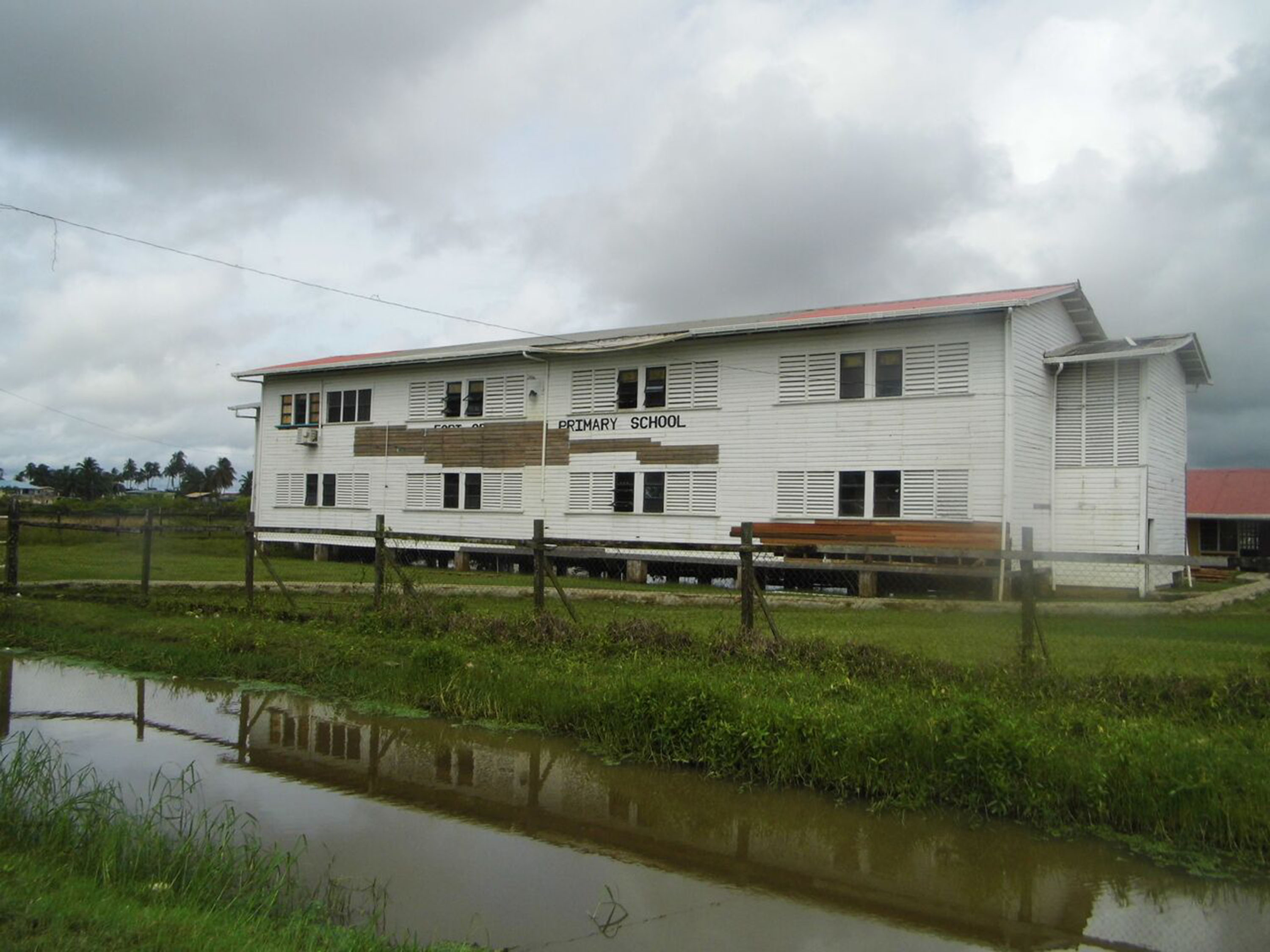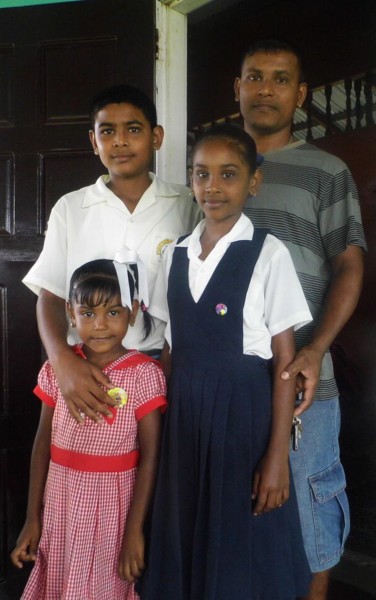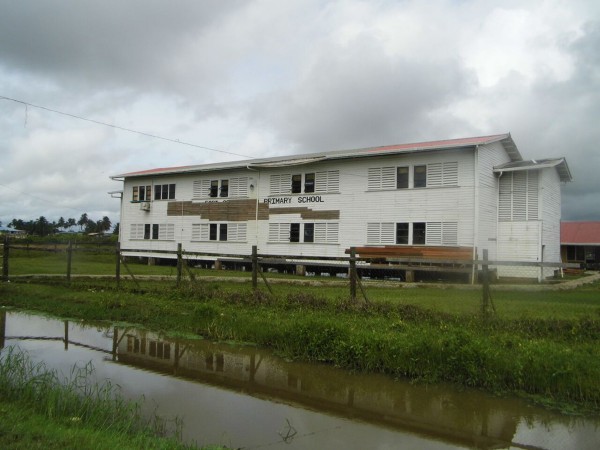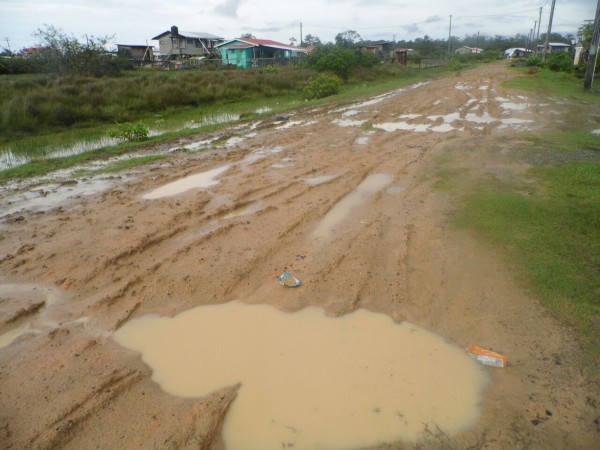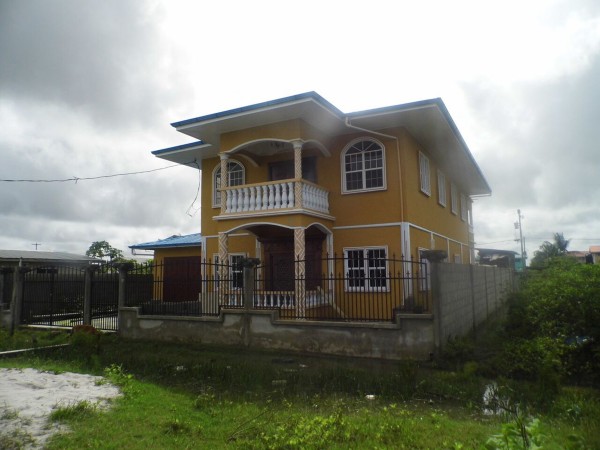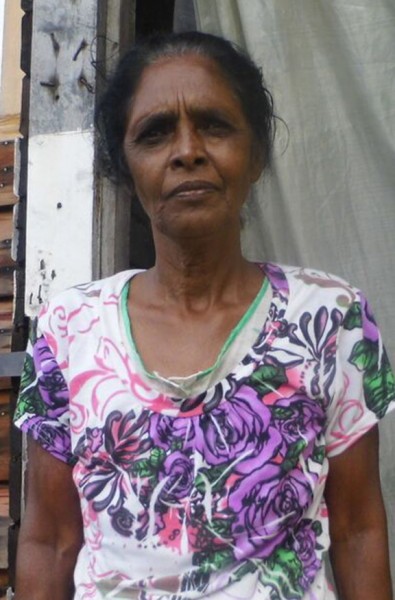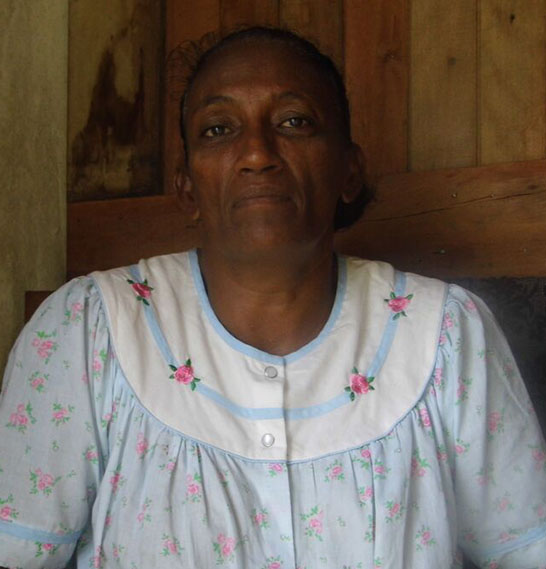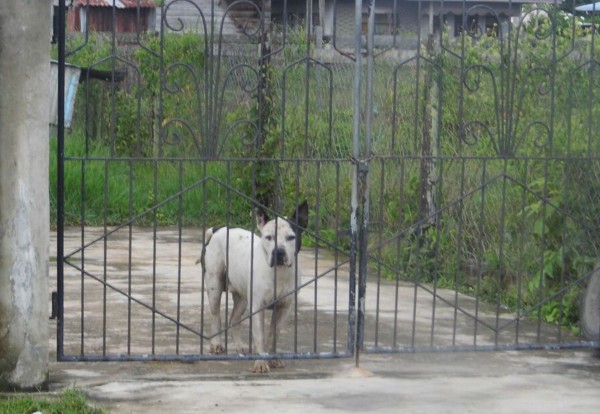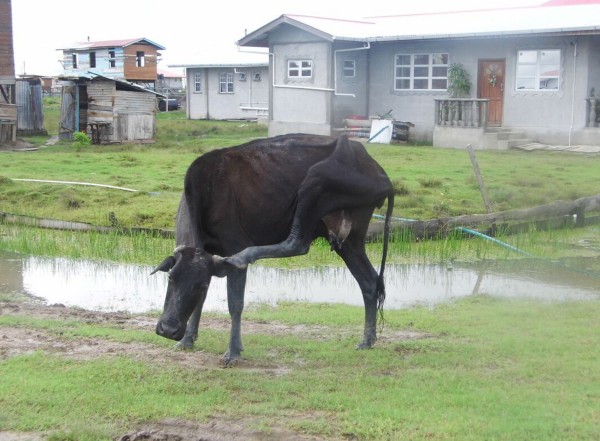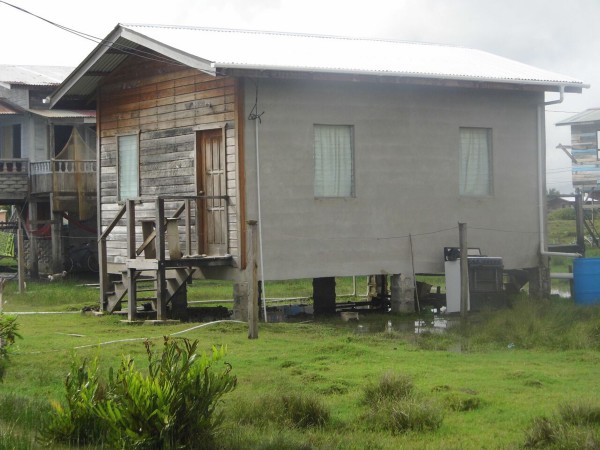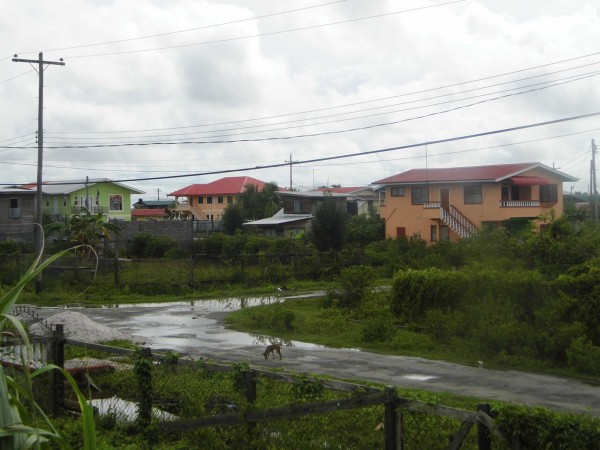(Part 2)
Second Phase
Development of the second phase of the Fort Ordnance Housing Scheme is now beginning to take shape. More and more houses are being constructed, with new families moving in almost weekly. There are also a significant amount of government ‘core houses’ in that part of the scheme. However, the scheme is a far cry from being fully developed and occupied. Anita Drugen, 28, was preparing her three children for school when Sunday Stabroek stopped by for a chat. One of the first settlers in that part of the scheme, Drugen recalled her family “lived without light for about three years.”
Reflecting on life in the scheme in early days, Drugen said, “We lived like a year by ourselves here before people start moving into the scheme and adjusting to life here was hard at first.” The woman explained that there were “no lights, no water and no phone service; and transportation was and still is very expensive to come in at the back here.” To access the second phase of the scheme, most often persons have to employ the use of a taxi which costs $500 per trip.
Nevertheless, Drugen said she was grateful that her family was able to purchase the house lot and build their own home. “We were living in Canefield at in-laws, but we needed our own place as our family got bigger,” she explained. Since then the area has begun to receive potable water (albeit very red) from the Guyana Water Incorporated, and is receiving electricity from GPL.
There is a lot more that needs to be done in the scheme the woman stated but declared she doesn’t mind waiting. “I tell myself, this is my house, my property so we got to make the best of it. We don’t have problem with no one, we say morning, good afternoon and that’s it. Everybody go about their business.”
Her grouse is with the deplorable state of the roads in the housing scheme. “The road is very bad. When the rain falls, you can’t come out of here with them children.” She further explained that her husband is forced to park his motorcycle on one of the main roads in the scheme because of the deplorable state of the Cross Street in which they live. Ferrying food stuff and household items into the scheme also proves to be a challenge. “It could be how much load you have, the cars refuse to come at the back here, so we have to fetch it in,” Drugen said. Compounding the situation, are the cows roaming freely on the streets. “The cows damaging the street and when you see them on the street you frighten. When I first move in here, one butted me,” she admitted.
Sixty-four-year-old Bissoonpattie Bissoondyal called Aunty Shirley, who has lived in the scheme for less than a year, lamented the long distance between the second phase and the East Canje Public Road. “Since I move in here I can’t go to church, because the road is bad and there is no transportation to get in and out of here. I want them look after the road,” she said. Everything else according to Aunty Shirley, is “not bad enough to complain about; it manageable.”
Temporary resident of Fort Ordnance, Joycelyn Inshanali who was on her veranda relaxing told Sunday Stabroek she was just ‘land sitting’ for her sister. “Is my sister land, but she ain’t ready to build here so I just staying on the land in the meantime.” She further stated that neighbours, though few in the second phase, live amicably with each other and it is nice to see “one by one everybody just coming and building them house and move in.” She too mentioned the awful state of the roads and called on the relevant authorities to do something. “People weary fall down on them. The cross streets are very bad.” Inshanali stated that the only time the government paid attention to the condition of the roads was just prior to the hosting of the May 11 elections. “The other day before election, they come and throw some red sand and smooth am because them hear president ah come.” However, the haphazard maintenance work didn’t last and as soon as “rain ketch am he done get back bad, big, big holes.” Pointing to the clogged drains, the woman said there is need for better drainage and irrigation. “When this place flood, water does stay for one month, stagnant water which does breathe mosquitoes and plenty sandflies,” she remarked.
DAFO – Development Association of Fort Ordnance
All the residents interviewed confirmed that the housing scheme is plagued with breaking and entering and burglaries, armed robberies and a few petty crimes. To curb the crime rate, and promote the development of the scheme, DAFO was established. Formed in January 2013, the Development Association of Fort Ordnance (DAFO) is a community-based group aimed at developing the housing scheme. To this end, the group has identified several areas on which to focus its attention including Security, Youth Development, Women’s Welfare and Sports. In its first year DAFO established a community policing group to help tackle the crime wave in Fort Ordnance.
“While the formation of the CPG has seen a decrease in the frequency of breaking and entering, there is still much more work to be done to curb the crime rate,” DAFO Chairman Stanley Jacobs posited. This, he said, can be accomplished if residents become each other’s keepers. “We need persons to understand that though they come from different backgrounds, we are all one big family in Fort Ordnance and therefore should be vigilant and look out for our neighbours.” Jacobs lamented what appears to be the ‘mind your own business’ syndrome afflicting residents, whereby “they do not pay attention to what is happening in the community around them.”
In addition to establishing the policing group, DAFO has also raised funds to install three street lights in the scheme, and erect four street signs. Funds are currently being accumulated to complete both projects. “The government created the housing scheme, but there is only so much it will do in terms of development. Therefore we as residents need to contribute towards the development of the community in which we live,” said Jacobs. DAFO has already fenced a portion of land in the scheme which will serve as a community centre.
There are several bottom-house shops in the scheme that cater for the basic food needs of the residents. However, most persons opt to purchase their monthly rations from supermarkets in New Amsterdam. Fort Ordnance Housing Scheme is characterized by high illiteracy rates. Children attend either the Fort Ordnance Primary School at the entrance of the scheme or the Sheet Anchor Primary School in the neighbouring village; but there are a lot of truants in the area.
There are no churches, mosques or temples, and so devotees attend places of worship in other villages. Residents have decent access to basic health services via the New Amsterdam Public Hospital and the Cumberland Health Centre. However, there are plans to open a health centre in the second phase of the scheme.
There is one official entrance into the housing scheme. Residents, however, use a ‘back track’ to gain access by foot to the scheme.
The housing scheme falls within the purview of the Number 38/Ordnance Fort-lands Neighbourhood Democratic Council (NDC). However, due to the fact it has not been officially handed over to the NDC by the Central Housing and Planning Authority, residents do not pay rates and taxes, and consequently the NDC does no developmental or maintenance work in the area.
